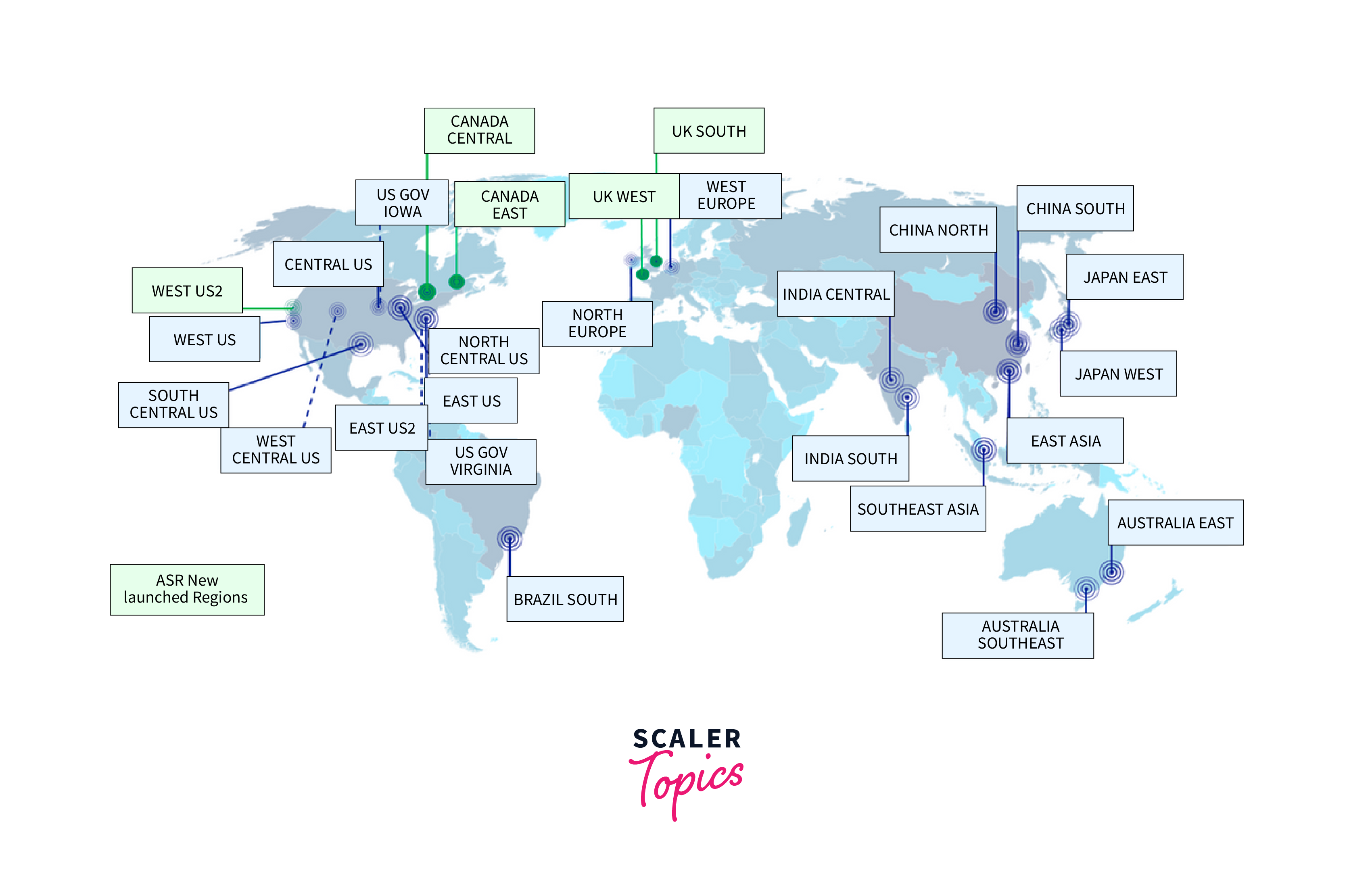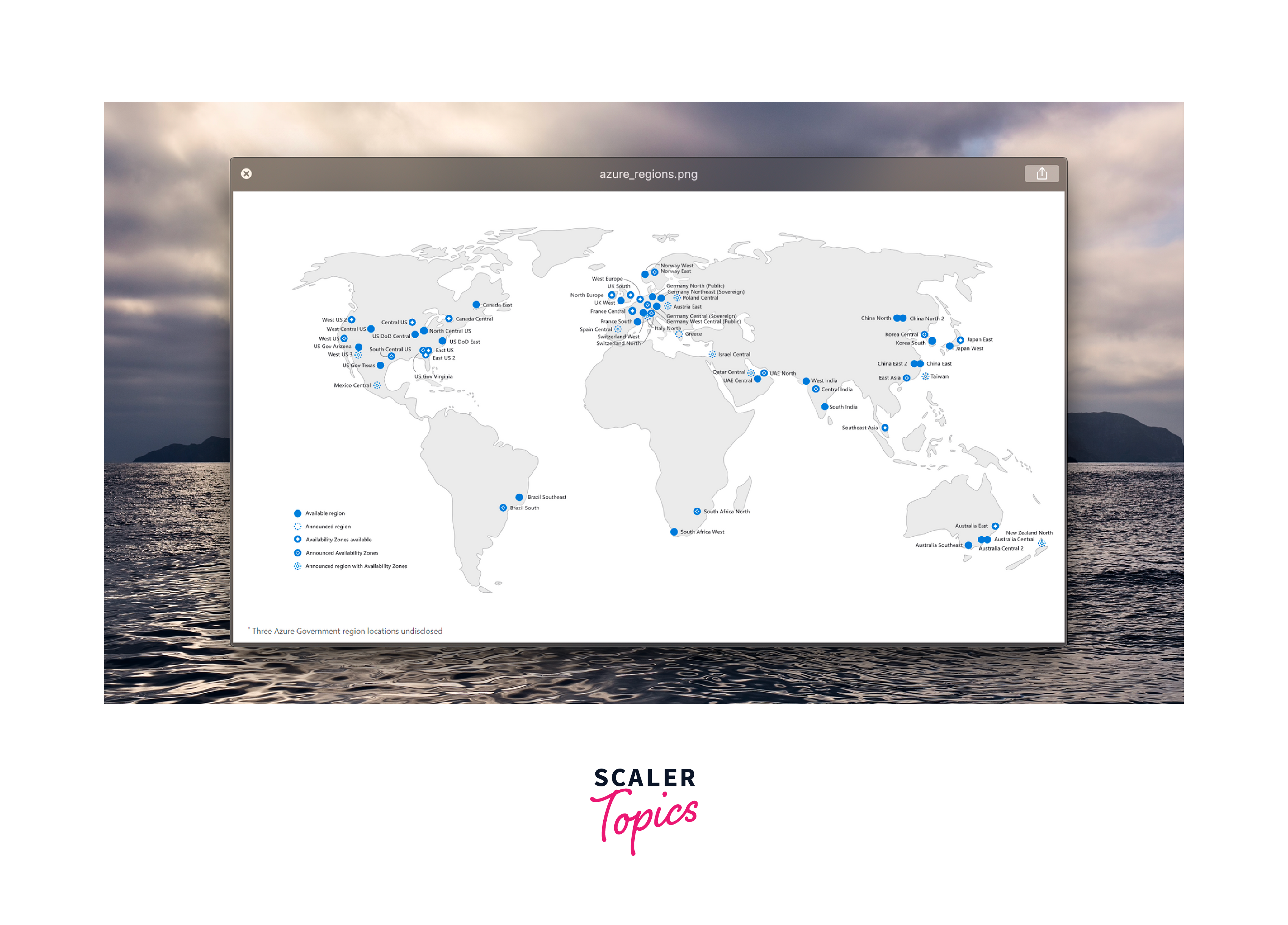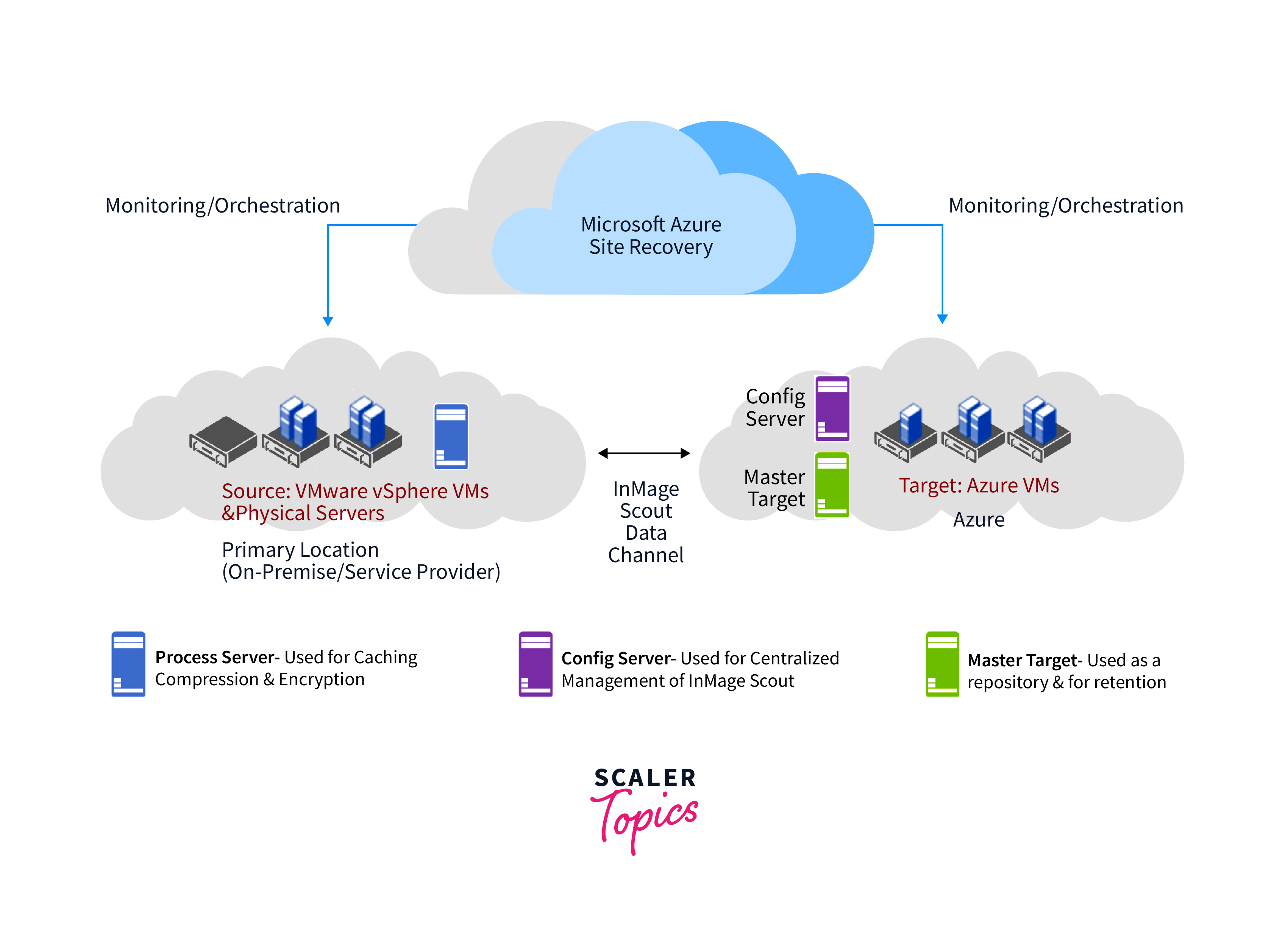Azure Global Infrastructure
Overview
Consider a huge, global network of interconnected data centers. That is the worldwide infrastructure of Azure. It serves as the foundation for Microsoft's cloud services, strategically positioned to assure speed, dependability, and security. Consider these data centers to be digital castles where your data is protected 24 hours a day, seven days a week. They operate in tandem to ensure that your apps and services are always within reach, no matter where you are. This powerful global network is the foundation of Azure's promise: to provide you the ability to design, deploy, and manage your digital world on a truly global scale.
Regions
Azure's global infrastructure consists of a massive network of data centers strategically located throughout the world, each of which serves as an important piece of the cloud computing jigsaw. Azure regions are the foundation of this architecture, and knowing them is critical for anybody beginning on a cloud journey.

An Azure region is a geographical area in the world with at least one, but frequently numerous, data centers. These zones are intended to provide your applications and data with redundancy, fault tolerance, and low-latency performance. Choosing the correct area is important whether you're hosting a website or performing complicated data analytics.
To ensure resiliency in the event of a catastrophic incident, each area in Azure is coupled with another region in the same geography. This implies that your data and applications may smoothly fail over to the matched area, guaranteeing continuity and peace of mind.
Furthermore, Azure continues to grow, introducing new regions to serve more locations, upgrading services, and making cloud resources more accessible. As of my most recent update in September 2021, Azure has over 60 regions worldwide, with more on the way.
Finally, Azure's global infrastructure regions are the pillars that support Microsoft's cloud platform's dependability and reach. To make the most of this strong global network, consider considerations such as data residency, compliance, and closeness to your users when choosing a location.
Availability Zones
Assume Azure as an expansive digital urban center, where Availability Zones (AZs) function as secure and resilient districts. These AZs play a pivotal role in Microsoft Azure's commitment to ensuring the uninterrupted operation and safeguarding of vital applications and data in the event of unexpected disruptions.

An AZ is a data center in Azure, with electricity, cooling, and networking. It's an area inside a region, intended to be physically independent of neighboring AZs while being tightly linked. Azure guarantees that if one AZ experiences problems, the others are unaffected.
Let's go deeper. Each AZ is made up of numerous data centers, each of which is outfitted with redundant power and networking. Azure services are distributed across AZs to spread risk. This innovative architecture provides your apps with near-100% uptime.
Azure automatically sends traffic to a healthy AZ during upgrades or unforeseen difficulties. This improves dependability while also providing geo-redundancy by allowing you to duplicate data and services across many areas.
Consider AZs to be your trusted, fortified neighborhoods in Azure, ensuring your digital assets are always secure, available, and ready to serve your requirements. It is the heart of Azure's global infrastructure, ensuring the security of your data and applications in an ever-changing digital ecosystem.
Azure Site Recovery
Azure Site Recovery stands out as a formidable safeguard within the cloud computing domain. Azure is capable of effectively shielding your organization from unforeseen disasters. It seamlessly integrates into Azure's expansive global infrastructure, ensuring the steadfast resilience and constant availability of your critical data.

Azure's global infrastructure covers the world, with data centers strategically placed across the globe to enable redundancy and low-latency connectivity. This implies that your valuable data is replicated across many areas, protecting it against local calamities or outages.
Azure Site Recovery's beauty is in its ability to duplicate your on-premises or Azure-based workloads to these geographically diversified data centers. It's your backup plan in case of data loss or unavailability. If a crisis happens, you may quickly failover to a backup site, ensuring company continuity without disrupting operations.
Furthermore, Azure Site Recovery supports a wide range of apps and workloads, making it an adaptable partner in your company's disaster recovery plan. It can support virtual machines, real servers, and even VMware environments.
Azure Site Recovery essentially serves as your safety net in the event of unforeseen circumstances. It assumes the role of a protector of your critical data, ensuring the continuity and resilience of your organization in times of adversity. Embrace its capabilities, and grant your data the liberty to operate securely within the Azure ecosystem.
Conclusion
- Geographical Reach:
Azure's vast global infrastructure covers 61 regions across the world, assuring proximity to customers for decreased latency and improved performance. - High Availability:
Azure's data centers are carefully spread to promote redundancy and dependability, resulting in near 99.99% uptime. - Network Backbone:
Azure's high-speed global network connects data centers seamlessly, assuring data and application availability and responsiveness. - Security Measures:
To secure data and applications across its global infrastructure, Azure employs sophisticated security mechanisms such as DDoS prevention and encryption. - Scalability:
The ability to scale resources up or down in different areas enables firms to easily respond to shifting needs and grow their worldwide footprint. - Compliance and Certifications:
Azure conforms to a wide range of compliance requirements and possesses different certifications, providing organizations with trust and certainty.
